Where to Eat Lean Wagyu in Tokyo – A Rare Alternative to A5
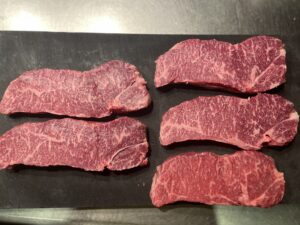
Why Lean Wagyu Is Gaining Popularity in Tokyo
Why Some Diners Are Turning Away from High-Fat Marbled Beef
While the first bite of A5 Wagyu can feel like pure luxury, many diners find that by the second or third bite, it becomes overwhelming. The richness doesn’t just coat the palate — it lingers in the stomach. For some, the experience ends not with satisfaction but with discomfort: a heavy, sinking feeling that can even last into the next day. It’s no surprise. When fat dominates the cut, what you’re eating is no longer meat in the traditional sense — it’s more like slices of concentrated fat with a trace of beef flavor.
Common Complaints from International Travelers
Many seasoned travelers to Japan — even those who love Japanese food — say this: “Trying ultra-marbled Wagyu once is enough.” Why? Because Japan offers so many types of high-quality meat that don’t rely on excessive fat. The problem is, outside of Japan, most information and media only promote one style: the highest marbling score. This leads to a distorted perception of what Wagyu really is.
What’s Missing in Most Wagyu Experiences
There’s a cultural reason why high-fat Wagyu is so beloved in Japan — and it makes perfect sense in context. Japanese meals are typically built around white rice as the staple, and richly marbled beef pairs perfectly with it. When thin slices of A5 Wagyu are grilled and dipped in a savory-sweet sauce, they become the ultimate rice companion. But most international diners don’t eat Wagyu with rice. Without that balance, the fat quickly becomes too much. Lean Wagyu restores that harmony, delivering satisfaction without the heaviness.

In Tokyo’s competitive food scene, many travelers arrive with one goal: to try authentic Japanese Wagyu. But something interesting is happening—more Tokyo travelers
What Is Lean Wagyu? Understanding Akaushi Beef
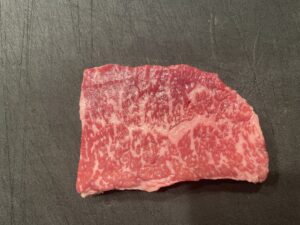
Akaushi from Kumamoto – Origin and Rarity
Kumamoto’s Akaushi is an exceptionally rare type of lean Wagyu, making up only 1.3% of all Wagyu distributed nationwide. Bred by crossing native Japanese cattle with Swiss Simmental in the 1940s, Akaushi was officially registered as Wagyu in 1944. Raised on the open grasslands of Aso, where clean water and a gentle climate prevail, Akaushi cattle thrive in natural, stress-free conditions that enhance their meat quality.
Lean Doesn’t Mean Dry – Texture and Umami
Akaushi is known for its high proportion of red meat and just the right amount of fat, offering a satisfying balance of tenderness and flavor. Unlike more heavily marbled Wagyu, Akaushi contains less than 12% fat in most cuts. More importantly, it’s rich in natural umami components like free amino acids, peptides, and glycogen. These compounds create a full-bodied taste that doesn’t rely on fat. Nutritionally, Akaushi is also high in protein, iron, B vitamins, calcium, and taurine — a compound believed to support liver function and lower blood pressure.
How It Compares to A5, Kobe, and Matsusaka
While Kobe and Matsusaka Wagyu are known for their marbling, Akaushi takes a different approach. Think of it like switching from a sweet dessert wine to a complex Burgundy. Akaushi prioritizes finesse, balance, and aroma over sheer indulgence.

When most people think of Wagyu, they picture thick ribbons of creamy white fat woven through bright red meat. This intense marbling—especially in A4 or A5-grade Marbled Wagyu—has become a global symbol of luxury and indulgence.
Where to Eat Lean Wagyu in Tokyo
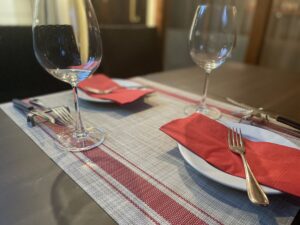
Why It’s Rare to Find Restaurants Serving True Lean Wagyu
Lean Wagyu requires precise handling and sourcing. Many restaurants avoid it due to its scarcity and the culinary skill required to cook it properly. As a result, even in Tokyo, finding a place that serves genuine Akaushi is difficult.
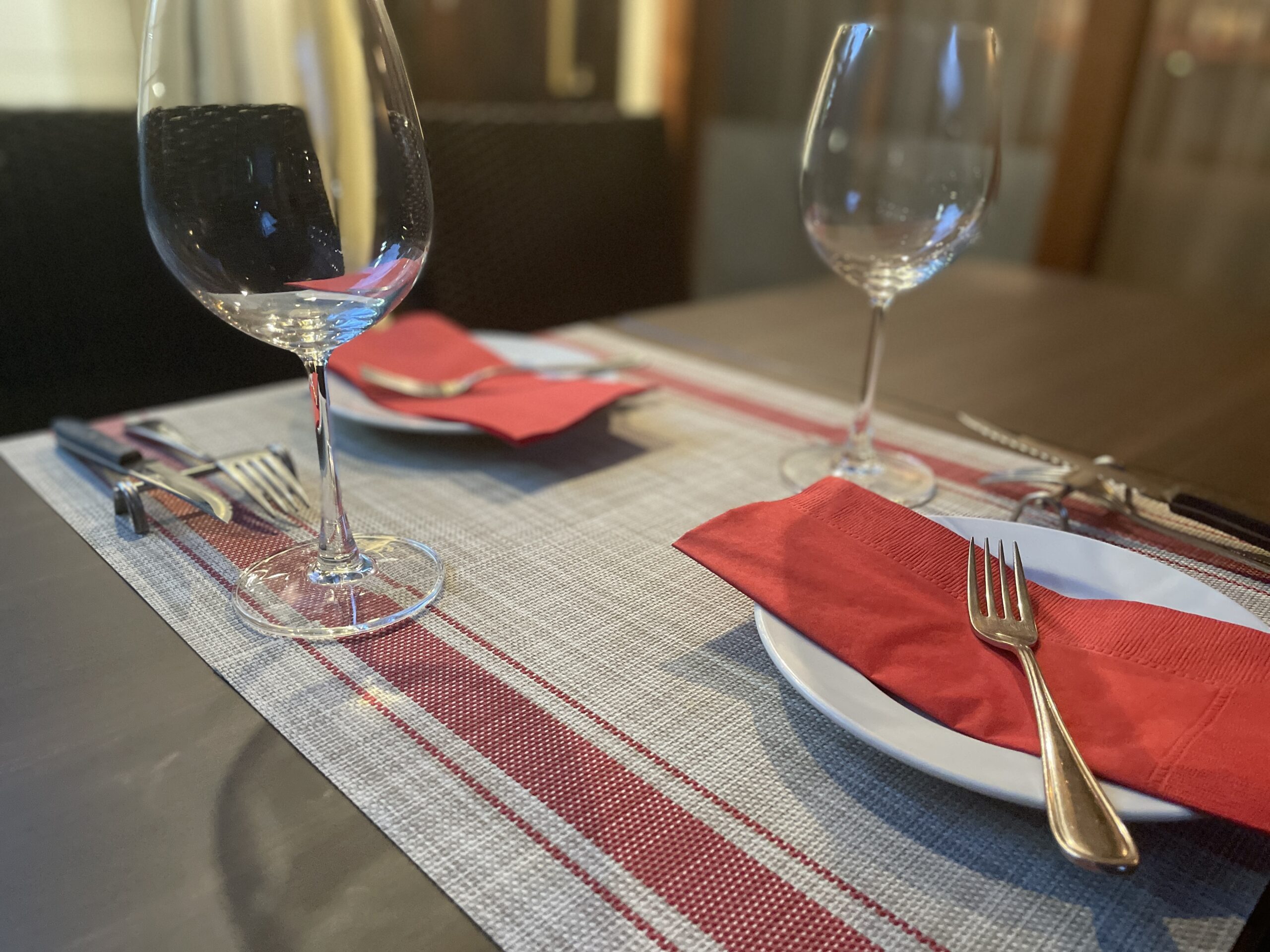
Looking for a Tokyo Wagyu tasting experience that’s elegant, memorable, and not overloaded with fat? At QUNIOMI, we serve a lean Akaushi beef course crafted with precision and restraint. This is not just another Wagyu dinner—
Introducing QUNIOMI – A Quiet Wagyu Restaurant in Ebisu
QUNIOMI is one of the few Tokyo restaurants specializing in Akaushi Wagyu.
Located in Ebisu, this reservation-only restaurant offers a seasonal tasting menu built entirely around lean Wagyu. The number of guests each night is deliberately limited, ensuring a calm and intimate dining atmosphere.
The chef behind QUNIOMI was deeply inspired by the unforgettable beef he tasted during his time training in France.
After returning to Japan, he searched for a similar flavor — and found it in Akaushi from Kumamoto. But rather than recreate French cuisine, he embraced his identity as a Japanese chef.
Drawing on solid technique and a deep understanding of terroir, he crafts dishes that highlight the essence of each ingredient.
The result is a style of cooking that resembles Japanese kaiseki in its restraint: removing the unnecessary to let the true character shine.
Want to Learn More?
To see photos of each dish, detailed menu breakdowns, and how to reserve a seat:
Explore our full dinner and reservation guide
Final Thoughts – For Travelers Seeking More Than Just Marbling
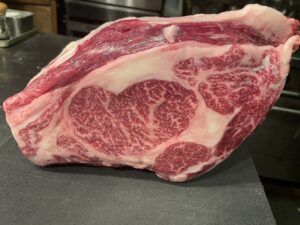
Who This Dining Experience Is Really For
QUNIOMI is not for trend-chasers or those who seek out only the most marbled cuts of beef. It’s for guests who value precision, depth, and quiet excellence. Here, the chef uses his Japanese heritage and honed technique to reveal the natural potential of every ingredient. The cuisine reflects a thoughtful approach: grounded in discipline, elevated through simplicity, and designed to leave a lasting impression.
Why Lean Wagyu Could Be the Future of Premium Beef
As the global food scene shifts toward lighter, more balanced dining, lean Wagyu like Akaushi fits perfectly into that trend. It’s elegant, rare, and deeply satisfying — without overwhelming the senses.
Limited Seats – Plan Ahead to Secure Yours
Because QUNIOMI welcomes only a small number of guests each evening, reservations can fill quickly. If you’re planning a trip to Tokyo and want to experience lean Wagyu at its finest, we recommend booking early.

Looking for a Tokyo Wagyu tasting experience that’s elegant, memorable, and not overloaded with fat? At QUNIOMI, we serve a lean Akaushi beef course crafted with precision and restraint. This is not just another Wagyu dinner—